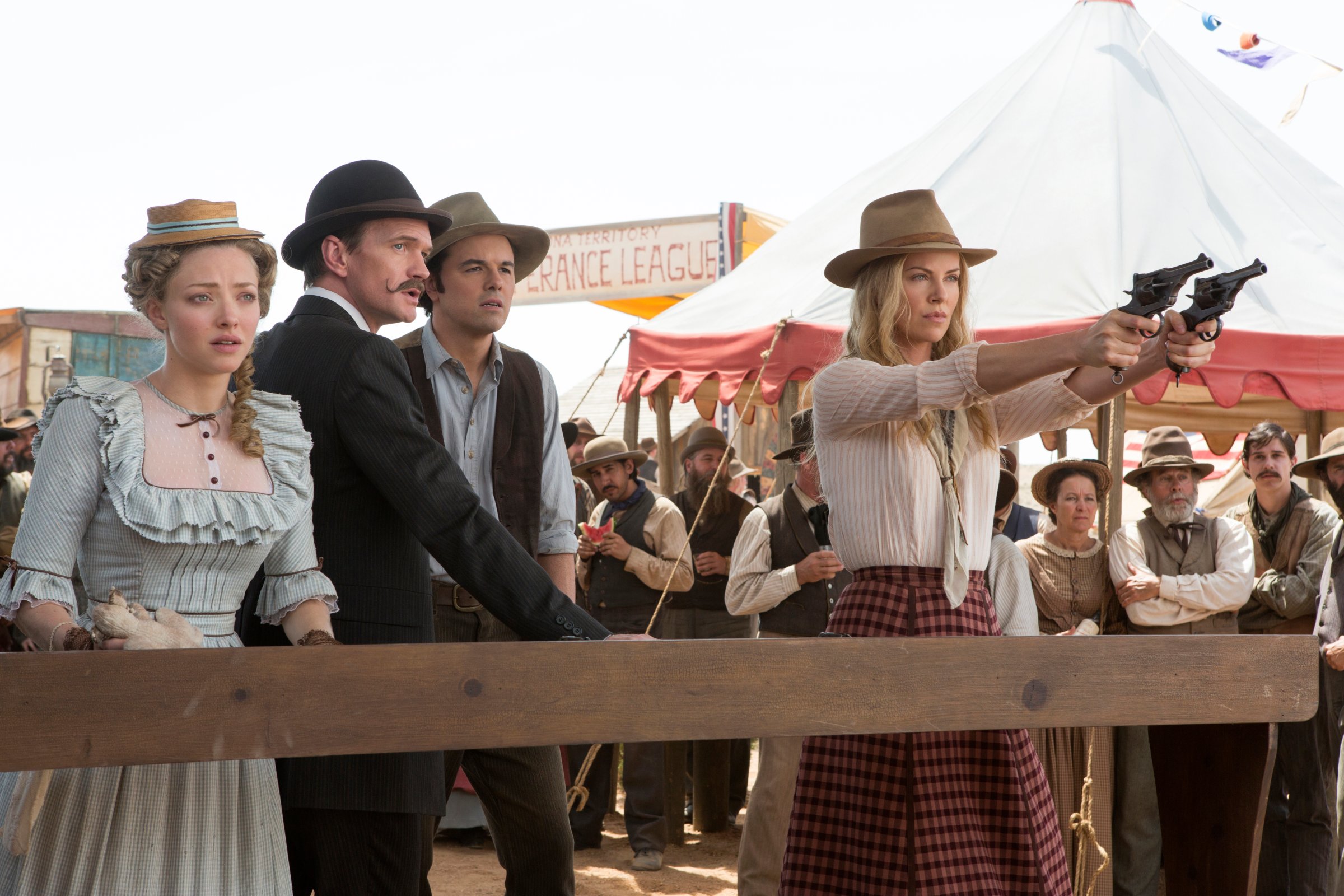
For Seth MacFarlane, the weekend box-office numbers were brutal. His A Million Ways to Die in the West earned just $17.1 million, or less than a quarter of the estimated $70 million gleaned by Disney’s Maleficent — and less than a third of the $54.4-million opening for MacFarlane’s own Ted two summers ago. His new comedy also failed to reach the modest predictions, in the mid-to-upper $20 millions, of the industry’s blogging touts.
What went wrong? A few obvious things. Instead of Ted‘s reliable marquee name Mark Wahlberg, as the guy whose best friend was a toy bear with an R-rated mouth, MacFarlane made himself the star for his first visible leading movie role. A Million Ways to Die received mostly negative reviews from the critics, and a poor “B” rating from the CinemaScore survey of early attendees. But MacFarlane’s main crime? He dared to make a Western.
(READ: Corliss’s review of A Million Ways to Die in the West)
Throughout the movies’ golden age, the Western enriched Hollywood financially and artistically. But in the 1970s, the genre lost its audience appeal to fantasy films of the Star Wars stripe, which told more or less the same story — elemental animosities leading to an armed showdown — but at a faster tempo, and in outer space. The spectacle of men in kerchief and boots hanging around a seedy 19th-century town waiting to shoot or be shot suddenly seemed painfully slow.
Directors still love Westerns, and when they’ve won their patrons’ trust with a big hit, they often use that favor to make one. But Westerns often carry high production budgets; and this quintessentially American genre doesn’t often attract moviegoers abroad, where the box-office gravy is. Of Westerns released in the past decade, the one unqualified success is Quentin Tarantino’s Django Unchained. Made for about $100 million, it earned $425.4 million worldwide, 62% of that coming from foreign markets. The Coen brothers’ True Grit remake was a domestic hit ($171.2 million) that tanked internationally ($81 million), but the movie cost less than $40 million to produce, so we’ll call that a success, too. After that, the results are mixed to bad.
(READ: Is the Movie Western Too Tough to Die?)
Recent flop Westerns include Cowboys & Aliens ($163 million budget, $174.8 million worldwide gross) and Johnny Depp’s The Lone Ranger ($215 million budget, $260.5 million worldwide). Keep in mind that the producing studios often spend $100 million to promote a movie, and that little more than half of its total gross comes back to them. So these movies — and The Alamo, and Depp’s animated Western Rango, and Brad Pitt’s The Assassination of Jesse James by the Coward Robert Ford — mostly spilled red ink.
If there’s an upside for MacFarlane, it’s that he spent less making A Million Ways ($40 million) than he did on Ted ($50 million). So his new movie won’t lose much money. It also, alas, won’t lure audiences back to the Western.
More Must-Reads from TIME
- Why Trump’s Message Worked on Latino Men
- What Trump’s Win Could Mean for Housing
- The 100 Must-Read Books of 2024
- Sleep Doctors Share the 1 Tip That’s Changed Their Lives
- Column: Let’s Bring Back Romance
- What It’s Like to Have Long COVID As a Kid
- FX’s Say Nothing Is the Must-Watch Political Thriller of 2024
- Merle Bombardieri Is Helping People Make the Baby Decision
Contact us at letters@time.com